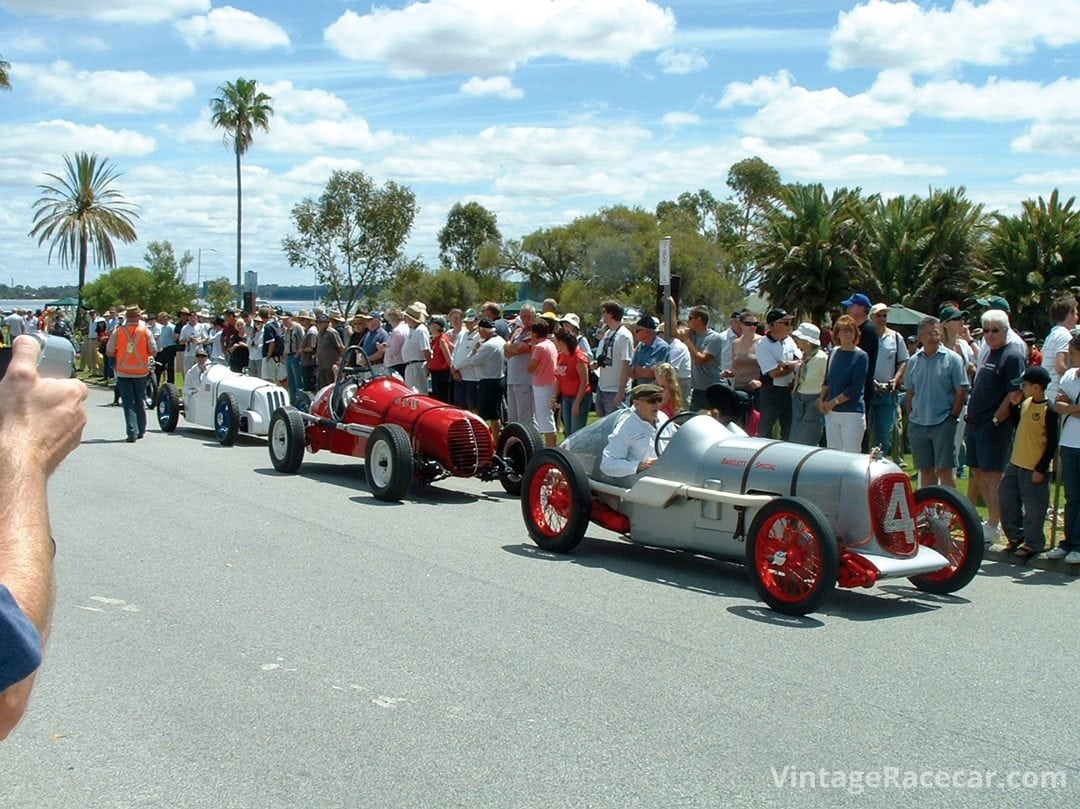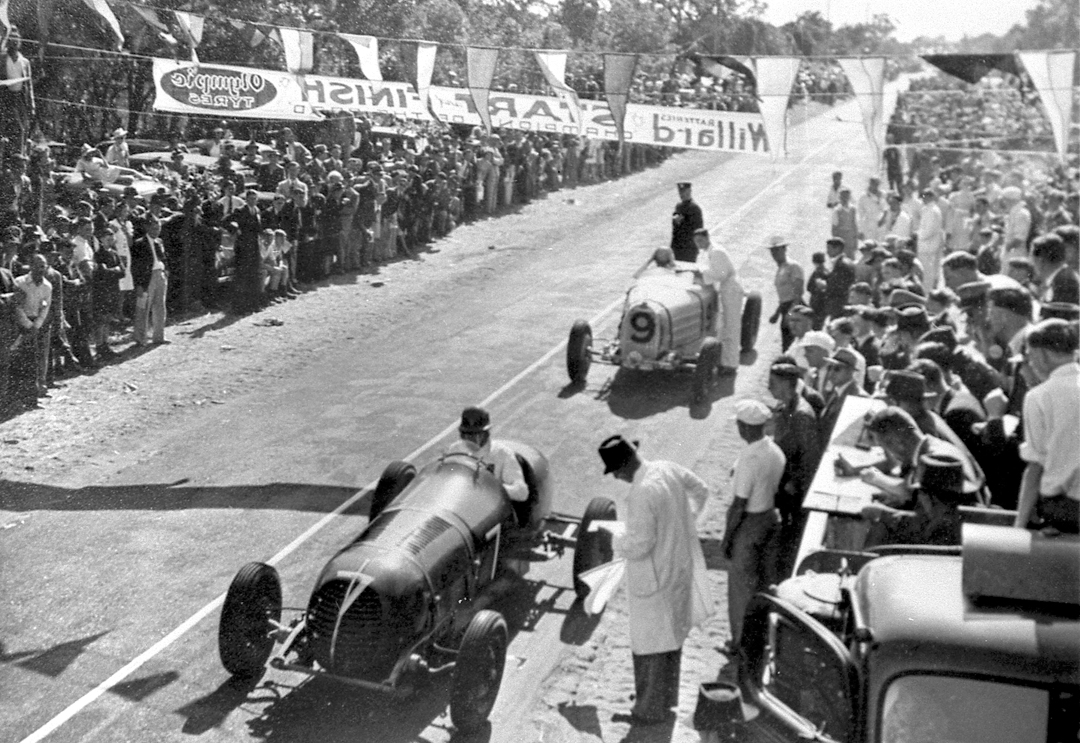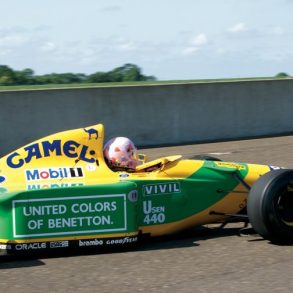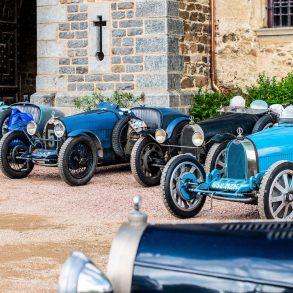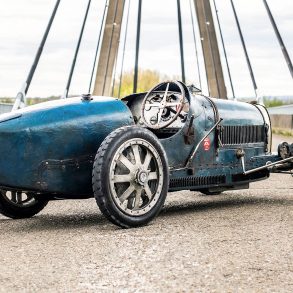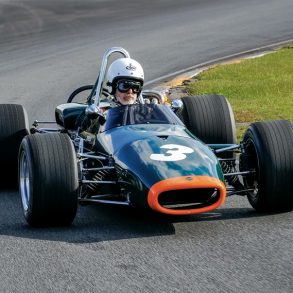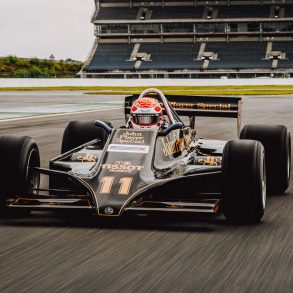Patriotic Races
“It is my melancholy duty to inform you officially that, in consequence of a persistence by Germany of her invasion of Poland, Great Britain has declared war upon her, and that, as a result, Australia is also at war.”
With those words, uttered by Australian Prime Minister Robert Menzies on September 3, 1939, Australians found themselves involved in a war on the other side of the world. Within months, troops had embarked for places with names like Libya and Palestine. On the home front it wasn’t long before rationing commenced, with everything from leather and fuel to food stuffs becoming available only if you had the correct ration cards.
Of course, any form of motor sport was out of the question as all work and play was devoted to the war effort. Eyes were on the rising casualty figures coming back from the Middle East, and Australians were dedicated not only to assisting the government of the day but to providing money to what was known as the “Patriotic Funds” or charities established to care for servicemen.
It would probably never happen again, but in Perth, Western Australia, an idea was conceived to stage a motor race to support the “Patriotic Funds.” It was to become known as the Applecross Grand Prix and was staged through the then-sparsely-populated suburb of Applecross. Today, Applecross has an air of genteel affluence with mansions lining what was once the circuit and, just a stroll away, are the broad reaches of the Swan River. While Western Australia is known for its “round the houses” races, the Applecross GP, also dubbed the Patriotic Grand Prix, is the only circuit race that was held in metropolitan Perth.
With fuel rationing in full swing it’s hard to believe that approval was ever given for such an event, but it was this shortage that actually made the races possible. Access to the Applecross area of Perth was straightforward, meaning that a relatively low amount of precious fuel was needed by spectators. Race organizers also justified the wartime event as many of the cars would use methanol instead of gasoline.
Long Straight
The 2.5-mile circuit was triangular, consisting of a long straight and a series of corners that ran along the Swan River. Besides events for racing cars, there were races for motorcycles, sidecars and cars fitted with gas producers. These were curious devices normally attached to the rear of vehicles that used burning coal or charcoal that gave off a gas that was used in the engine.
Appropriately, the Patriotic Races were held on Armistice Day, November 11, 1940, and the main event attracted a large field of competitors who were no doubt yearning for a little motor sport during such serious times. Besides the numerous MGs and Wolseley Hornets, there were the deceptively quick supercharged Austin 7 of Aubrey Melrose, two Plymouth-powered specials of Barry Ranford and the legendary Clem Dwyer, as well as Jack Nelson’s Ford 10 Special called the “White Mouse” that he had constructed in the six weeks prior to the event. Also lined up was Allan MacKintosh for his first drive of the ex-Brooklands, Salmson-powered Bartlett Special, Harley Hammond behind the wheel of his Marquette Special and the Ford V-8 Special of Ron Posselt with riding mechanic Gordon Davies. However, without doubt the fastest of all the entrants was Duncan Ord’s ex-works Bugatti T57 that had been previously driven by Earl Howe in the 1935 Irish Tourist Trophy and later in the Marseilles Grand Prix by the ill-fated Pierre Levegh.
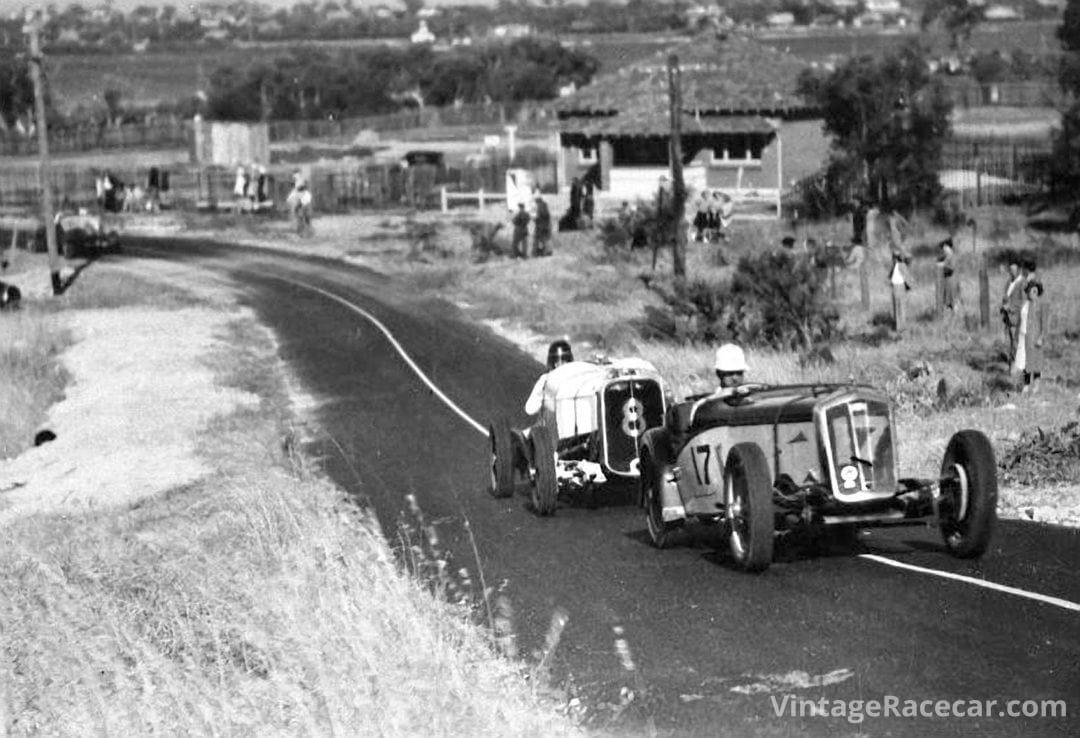
While race day fell on a Monday, it was also a public holiday and the crowds arrived in droves. The entry fee was set at a shilling (10 cents) and it was a further sixpence (5 cents) for a program. Depending on what reports you read, between 20,000 and 40,000 spectators lined the track. Looking at period photos, Armco and crowd control was very much in the future.
Handicap
Like many races of the period, the Applecross GP was a handicap event with the slowest car away first. Practice commenced at 6:30 a.m. and the first race was scheduled for 11:00 a.m. following a 2-minute silence for Armistice Day.
The first race was for bikes/sidecars, but the crowd had really come for the 25-lap main race set for later in the afternoon. The Austin 7 of Aub Melrose was flagged away first, almost 10 minutes before Ord’s Bugatti. Unfortunately, the DOHC Salmson engine of MacKintosh’s Bartlett Special performed at its usual standard causing it to soon become an also ran. It wasn’t long before Ord’s T57 started to carve up the field with lap times of around 2 min 40 secs—some 9 secs quicker than his practice times.
However, Melrose’s lead was looking unassailable until his engine started to overheat and he had to stop to replenish the radiator, allowing Hammond’s Marquette Special into the lead. Meanwhile, the two Plymouth-powered specials of Ranford and Dwyer were having a dice of their own until the Ranford Special lost it on a corner. With 17 laps down, the Bugatti looked as if it was set to pass the field when Ord suddenly slowed with ignition problems, but not before setting a fastest lap of 2 mins 39 secs.
Hammond was still in the lead, but Clem Dwyer was close behind in the Plymouth Special. However, history tells us that he was not destined to close the distance between them. In 3rd place was Jack Nelson in the Ford 10 Special, and lucky to finish in 4th was Barry Ranford, whose car was experiencing serious brake problems.
Applecross Revisited
Formed in 1986, the Vintage Sports Car Club of Western Australia originally set out to organize events catering for older sports and racing cars in that state of Western Australia and to especially celebrate the popular “round the houses” events of the ’30s, ’40s and ’50s. With their 20th birthday on the horizon, the committee of the VSCC looked to hold an event that was not only suitable to commemorate the anniversary but was very much in the style of the state’s motor sport history.
The Caversham circuit was the scene of the Victory Grand Prix in 1946 and the 1957 and 1962 Australia GPs and seemed to be the perfect venue for such an event. However, Caversham was originally the site of a WWII Royal Australian Air Force base and, while it was being decommissioned, the Department of Defence gave the clear thumbs down.
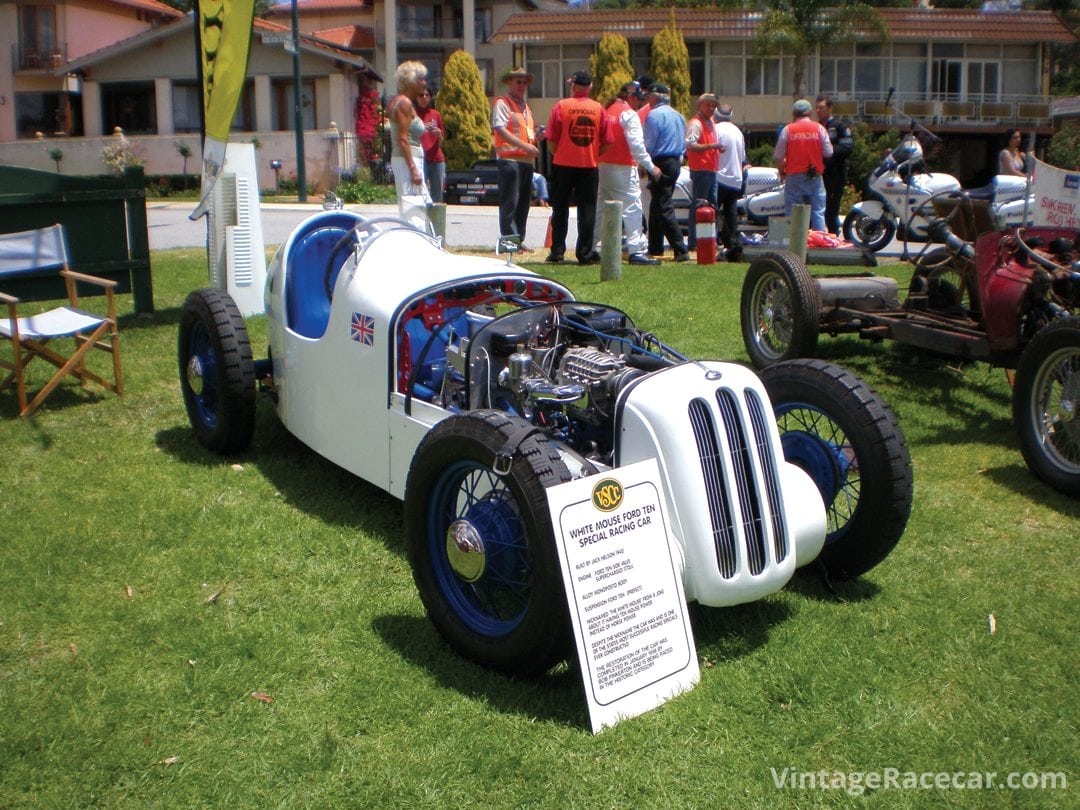
Undefeated, the VSCC then turned its attention to the Patriotic GP held at Applecross in 1940. As it happens with clubs, working committees were formed and enthusiastic members Ken and Mary Ann Stewart-Richardson found themselves at the helm to stage a re-enactment of the Applecross GP. To their delight, an approach to Melville City Council brought a favorable response even to the extent of a suggestion that the VSCC apply for a special grant. The AUS$1,000 received from the grant went a long way to assist with the myriad expenses. Right from the beginning, the Melville City Council adopted the re-enactment as an event of cultural significance.
The enthusiasm became infectious, especially with older members who could remember being at Applecross in 1940 and, thankfully, some still had their sixpenny programs!
A Great Success
While the reenactment held on November 12, 2006, was not quite the race of 1940 it was a chance for owners of historic racing and road cars to drive the complete Applecross circuit. Round-abouts, concrete kerbs and spectators do not necessarily make for lap times like that of Ord’s Bugatti, but with the generous assistance of the police, over 100 cars and their drivers and passengers experienced the circuit. We understand that motorcycle police who escorted the parade advised drivers not to look at their speedometers, but to proceed at the speed the bikes were traveling. The event was open to all vehicles including open wheelers, sports cars, saloons, motorcycles and so on. If your car wasn’t licensed for use on the road, it didn’t matter as special permits were issued on the day.
With the police blocking the road to other traffic, most entrants managed three laps of the circuit before moving on to the Jeff Joseph Reserve in the suburb of Applecross to join with other enthusiasts for a car show, picnic lunch and the customary telling of tall tales. Drivers and their guests were asked for a AUS$20 donation for which they received an excellent 28-page commemorative publication named “Patriotic Road Races” prepared by Graeme Cocks of the Fremantle Motor Museum (admin@fremantlemotormuseum.net). The remaining money was donated to the Cancer Foundation of Australia.
Reports indicate that there were thousands of spectators lining the roads and it was clear the residents of homes along the way welcomed the cars by inviting friends to spectate from front gardens and verandahs—no doubt with the glass of champagne being enjoyed.
Five Originals
It’s wonderful to report that, of the original 1940 Applecross GP cars, there were five at the reenactment.
The Plymouth Special originally raced by Clem Dwyer after being through many guises, including being converted into a road going sports car, has now been restored to its original glory and is owned by organizers Ken and Mary Ann Stewart-Richardson.
The White Mouse was built especially for the original event with a Ford 10 engine on an Austin 7 chassis and received some well-intentioned jibes saying that its engine produced all of the 10 mousepower instead of that from the normal horses. After the race, it went through other hands to eventually being dismantled and almost forgotten on a farm. Thankfully, members of the Vintage Sports Car Club rescued the car and, following a restoration, it was reunited with Jack Nelson just before he died a few years back. It is now owned by an enthusiastic Jack Del Borrello.
The Bartlett Special was originally derived from a San Sebastian Salmson and built in the UK for racing at Brooklands. Extremely quick when all was well, its highly tuned DOHC four-cylinder did prove unreliable in the original race. Now fully restored and the engine somewhat tamed, the Bartlett Special is in the good hands of Bruce and Barry MacKintosh.
Thankfully, Ord’s historic Bugatti T57 is still alive and was in attendance in “under restoration” guise and has been owned by Jim Krajancich for many years. A competition car for most of its life, it was for some time fitted with a single-seater streamlined body. Now Jim is restoring the car to its Irish Tourist Trophy condition and it’s hoped it will soon be seen under its own power. The Wolseley Hornet originally run by Ernie Brammer is now owned by Peter Partridge and is also under restoration and was on show as a rolling chassis.
Another Round
Looking back, the Patriotic Grand Prix had undoubtedly been a great success not only as a race but also as a way to raise greatly needed funds to assist Australian service personnel. However, it did turn out to be the first and last time a motor vehicle race was held through the streets of metropolitan Perth. However, it wasn’t for want of trying as an application was made by the Western Australian Sporting Car Club to hold a further race meeting on May 7, 1949.
Sadly, the wartime fervor had been replaced by the long arm of officialdom, and the application was rejected by the Melville Roads Board. Their main concern was the potential damage to roadside trees, private gardens and property in general. The possibility of potential fatalities was raised as well, as such an event was undoing “all the instruction on road safety matters given to children.”
The WA Sporting Car Club perhaps wisely didn’t pursue the point and turned their attention to the military airstrip at Caversham.
Without doubt the Vintage Sporting Car Club of Western Australia is to be congratulated for the reenactment of the Applecross GP. Long may they prosper in commemorating WA’s “round the houses” motor sport history that is unique in Australia.
If you like this, there are over 6,000 more articles and features like it on Vintage Road & Racecar.
[button link=”https://dev.sportscardigest.com//subscription-account/subscription-levels/” color=”blue”]Click here to subscribe for as little as $3/month![/button]
